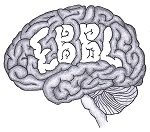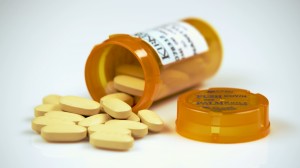The main goal for clinicians who look at neuroscience research on OCD is to ultimately find treatment that works. Let’s look at the various treatments under examination for obsessive-compulsive disorder.
Cognitive-Behavioral Therapy: Adjusting thoughts and Facing fears
One of the first lines of treatment for OCD from a psychosocial perspective is CBT, a treatment that focuses on the assertion that through cognitive and behavioral techniques, the emotional and psychological underpinnings of the disorder can be altered (Wilson et al, 2014; Olatunji et al, 2013). This is a common therapy for many different mental and emotional disorders including various anxiety disorders. For OCD specifically, CBT has been found to be largely effective for treating OCD symptoms compared to patient controls (Olatuji et al, 2013). While there are studies that show these effects continue for some time after treatment ends, it is still less certain for how sustaining these alterations on OCD symptoms really are (Olatuji et al, 2013).
While many studies analyze CBT as a single therapy option, CBT can also be considered an overarching category that splits into two specific types of CBT: Cognitive therapy (CT) and Exposure and Ritual Prevention (ERP). Do these categories differ in the treatment of OCD?
Cognitive therapy is a form of CBT that focuses on attempting to modify beliefs about the significance of intrusive thoughts (Olatunji et al, 2013). While this treatment has shown positive results in terms of treating OCD symptoms, the more frequently and initially utilized treatment for OCD is instead Exposure and Ritual Prevention (Olatuji et al, 2013).
ERP gradually exposes the patient to fear-eliciting stimuli/situations/thoughts while instructing them to resist compulsions (Olatuji et al, 2013). This form of CBT has also been shown to be effective for treating OCD symptoms, and some studies have not found a significant difference between the two types of CBT in terms of effectiveness of OCD treatment (Olatuji et al, 2013).
Pharmacotherapy: Treating OCD with the right medication
Therapy isn’t always the first or only treatment for OCD patients; medication has often been used either alone or in accordance with therapeutic treatments. The most customary pharmacological treatments for OCD are selective serotonin reuptake inhibitors (SSRIs) (Pittenger & Bloch, 2014). While fluvoxamine was the first SSRI to be shown with beneficial effects for OCD patients, there has not been evidence of any significant difference of effectiveness between different SSRIs, and the difference between them is mainly individual side effects and patient preference (Pittenger & Bloch, 2014). However, dosage does influence effectiveness, where SSRIs in higher doses are more effective for OCD than lower doses (Pittenger & Bloch, 2014).
Another pharmaceutical option is clomipramine, a tricyclic antidepressant that has been shown to benefit OCD patients (Pittenger & Bloch, 2014). It is also possible to combine an SSRI with clomipramine to improve effectiveness.
Other Treatment Options?
While medication and cognitive-behavioral therapies are the most commonly used treatments for OCD and other mental disorders, various studies are looking into what other ways OCD symptoms can be relieved. One study by Bais, Figee, and Denys (2014) analyzed the effectiveness of various neuromodulation techniques, including: electroconvulsive therapy (ECT), transcranial direct current stimulation (tDCS), transcranial magnetic stimulation (TMS), and deep brain stimulation (DBS). See this link for more info on the differing types.
ECT, while widely used to treat OCD up until the 1980’s, has been found to be ineffective in treating OCD symptoms (Bais, Figee, & Denys, 2014). tDCS is still largely untested for OCD, with only one study showing possible positive effects (Bais et al, 2014). TMS to the OFC has shown positive, yet temporary, results for OCD symptoms, and could be a promising technique after further studies (Bais et al, 2014). DBS has shown long-term effectiveness for OCD patients, with target areas including ventral striatum, nucleus accumbens, and other regions of the cortico-striato-thalamocortical circuit (Bais et al, 2014). DBS has also shown fewer side effects for patients, although DBS is more evasive than the other stimulation techniques (Bais et al, 2014).
While treatment options are still being investigated, there are many promising areas for OCD symptom relief. Many areas for treatment, including therapy, medication, and neuromodulation options, show beneficial effects for treating obsessive-compulsive disorder.
Sources:
Bais, M., Figee, M., & Denys, D. (2014). Neuromodulation in obsessive-compulsive disorder. Psychiatric Clinics of North America 37, 393-413. doi: 10.1016/j.psc.2014.06.003
Olatunji, B.O., Davis, M.L., Powers, M.B., & Smits, J.A.J. (2013). Cognitive-behavioral therapy for obsessive-compulsive disorder: a meta-analysis of treatment outcome and moderators. Journal of Psychiatric Research 47, 33-41. doi: 10.1016/j.jpsychires.2012.08.020
Pittenger, C., & Bloch, M.H. (2014). Pharmacological treatment of obsessive-compulsive disorder. Psychiatric Clinics of North America 37, 375-391. doi: 10.1016/j.psc.2014.05.006
Wilson, R., Neziroglu, F., Feinstein, B.A., & Ginsberg, R. (2014). A new model for the initiation of treatment for obsessive-compulsive disorder: an exploratory study. Journal of Obsessive-Compulsive and Related Disorders 3, 332-337. doi: 10.1016/j.jocrd.2014.08.003
Image Sources:
http://www.waxhawfc.com/therapy-charlotte-therapy-waxhaw-therapy-treatmen/cognitive-behavioral-therapy-cbt/
http://ocdtalk.wordpress.com/
http://www.phillypsychology.com/exposure-and-response-prevention/



